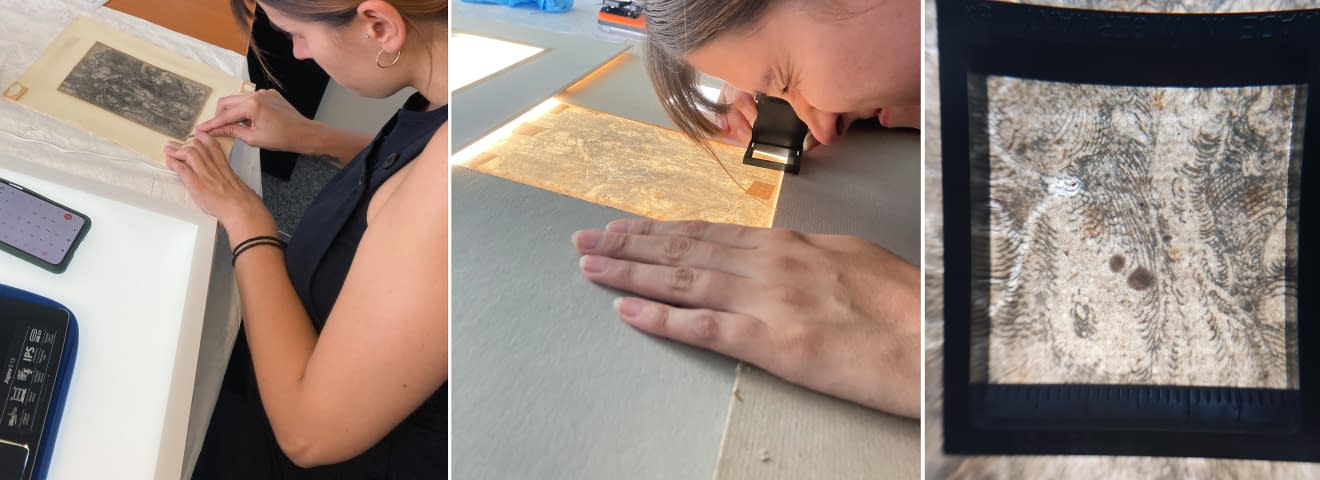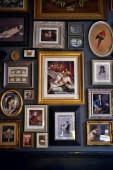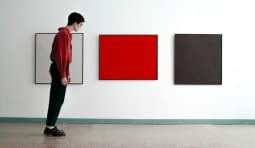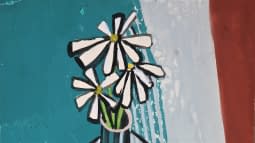A look into art restoration/conservation: The typitisation/ identification of paper by a paper restorer
(CO-Author Tijana Cvijetic)
Anyone who has followed my blogs (Lea Kämpf) for a while will have noticed by now that I work in a very special field of art: art restoration. Conservation and restoration make use of very different fields, not only manual execution, but also investigative science, such as art history, natural science and art technology. The aim of our profession is to understand the art object in its history, be it to be able to understand the process of the creation of the picture or the changes in its condition, in order to be able to conceive and carry out measures based on this that promote the preservation of an object for the future.
As multifaceted as the art world is, so is conservation and restoration. We distinguish between the following specialist areas, among others: Architecture, Paintings, Paper, Furniture, Modern Media and many more.
In this blog, we want to deliberately focus on paper and its art technological study.
Tijana Cvijetic, MA Graphics, Written Materials and Photography , is a paper conservator and restorer, specialising in graphics and drawings. As part of her master's thesis, she explored paper typitisation and identification, particularly in the field of handmade papers. She applied her methodology to selected works at the request of a private collector. The following report was written by Tijana Cvijetic personally:
As part of a private commission, selected works on paper were examined for their most meaningful and visually recognisable paper structural features. The profession of conservator:in-Restaurator:in combines theoretical knowledge from the natural sciences as well as art technology and history, whereby manual skill and ability are equally decisive. Embedded in the area of responsibility of a paper conservator and restorer, paper structure analysis is part of the art-technological examination.
During paper production, paper structure features are consciously or unconsciously introduced into the paper. These can be made visible by various light sources and then determined. These examinations make it possible to identify/typify the paper, which can confirm or deny suspicions regarding the authenticity of the work and thus prove whether the paper used originates from the presumed time of origin or not.
Since certain works were still mounted, they first had to be removed from their old mounting, since it is difficult or impossible to examine objects in their mounted state (image 2).
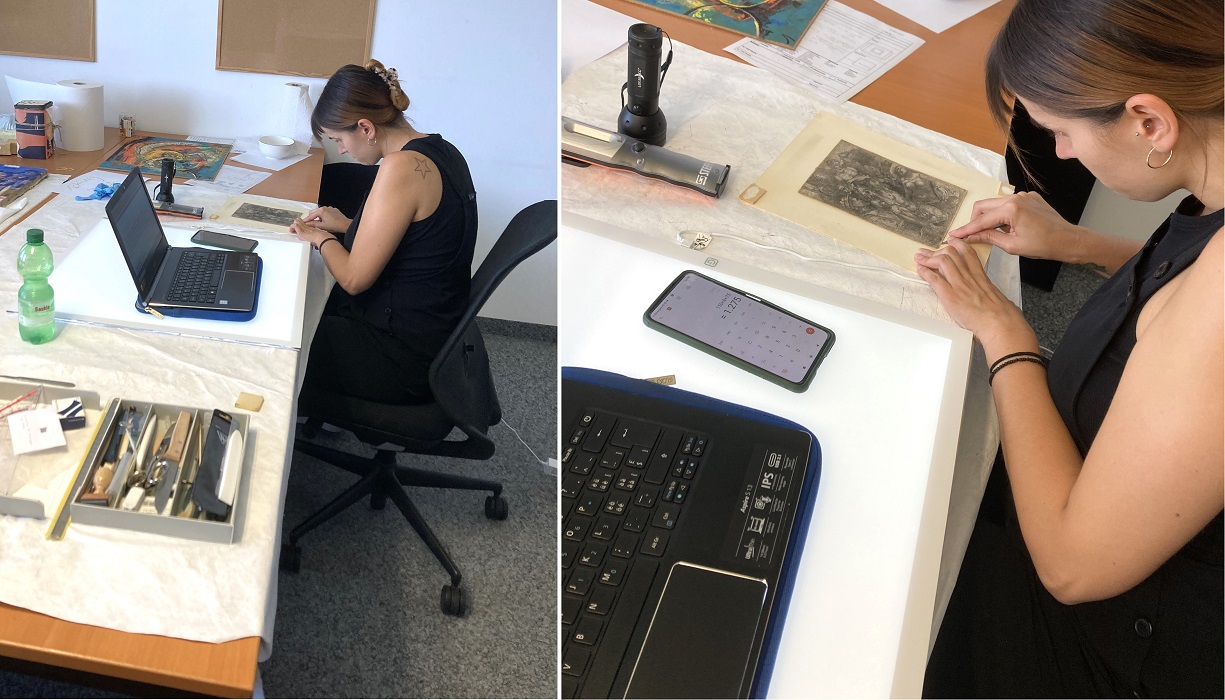
Image 1: View of Tijana Cvijetic's work table and her restoration tools. / Image 2: Tijana Cvijetic detaching the paper object from the old mounting.
Various light sources were used for these non-invasive, art-technological examinations of the paper. The object is examined under incident, transmitted, grazing and UV light.
The incident light gives a general impression of the condition of the paper, reveals its colour and helps to better visualise and document deformations, tears, folds and stains.
Transmitted light, which is generated by a light panel or a luminescent foil, is needed to examine the screen structure, fibre distribution, watermarks and inclusions as well as work marks (see images 3 and 4). An insight into the inner life of a paper is thus made possible.
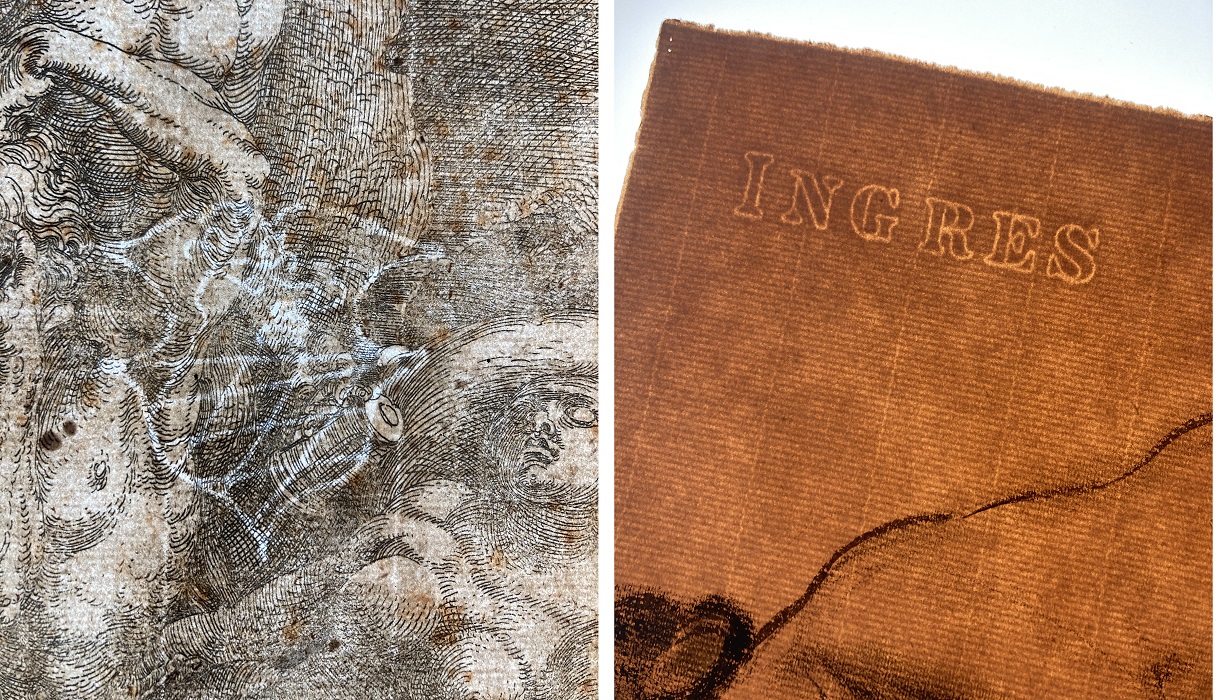
Image 3: The watermarks can be visualised in transmitted light. / Image 4: In addition to the watermark, the sieve structure of the paper can be seen with the help of transmitted light. The screen structure is created during paper production.
Stray light is strong, oblique light that highlights the surface features of a paper. Similar to transmitted light, grazing light can be used to visualise the watermark, the sieve structure, inclusions, manipulations on the paper (e.g. old restorations), traces of work and paper deformations.
The UV fluorescence is generated by means of a hand-held UV lamp and makes visible, among other things, foxing, metal inclusions, potentially present optical brighteners (whiteners), additions/retouching, water damage and surface treatments in the paper.
In addition to the various magnification light sources, a thread counter or handheld microscope is used to view the paper structure features (image 6).

Image 5: Tijana Cvijetic photographically records the work irradiated in transmitted light. The information obtained is always documented pictorially and in writing. / Image 6: By looking at the paper with the help of a thread counter (measuring magnifier), further paper characteristics can be determined.
Conclusion:
Paper typitisation/identification thus provides initial clues as to whether further analyses concerning the authentication and authenticity issues of a work are useful. For example, various, preferably non-destructive, but also destructive (sampling), scientific examination methods can be used. One non-destructive method would be X-ray fluorescence analysis (XRF), which allows conclusions to be drawn about the drawing materials used in a work.
Such analytical methods cannot all be guaranteed by a single expert, as dating art on paper and forgery detection is a highly interdisciplinary field. To achieve the best possible results, collaboration between different related disciplines is essential.
Are you a restorer and would like to share insights into your field of work? Do you have any questions about restoration or Ms Cvijetic? Then send us an e-mail at hello@art24.world.
